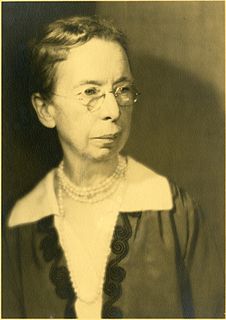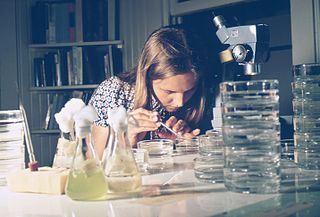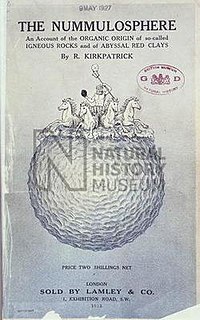
Dictyochales are a small group of unicellular heterokont algae, found in marine environments.

Prof Johannes Japetus Smith Steenstrup FRS(For) HFRSE was a Danish zoologist, biologist, and professor.

Mary Jane Rathbun was an American zoologist who specialized in crustaceans. She worked at the Smithsonian Institution, often unaided, from 1884 until her death. She described more than a thousand new species and subspecies and many higher taxa.

Rodolfo AmandoPhilippi was a German–Chilean paleontologist and zoologist.

Addison Emery Verrill was an American zoologist.

A biologist is a scientist who has specialized knowledge in the field of biology, the scientific study of life. Biologists involved in fundamental research attempt to explore and further explain the underlying mechanisms that govern the functioning of living matter. Biologists involved in applied research attempt to develop or improve more specific processes and understanding, in fields such as medicine and industry.
Nils Hjalmar Odhner was a Swedish zoologist who studied mollusks, a malacologist. He was professor of invertebrate zoology at the Swedish Museum of Natural History, Stockholm, and a member of the Royal Swedish Academy of Sciences.

Friday Harbor Laboratories (FHL), is a marine biology field station of the University of Washington, located in Friday Harbor, San Juan Island, Washington, United States. Friday Harbor Labs is known for its intensive summer classes offered to competitive graduate students from around the world in fields of marine biology and other marine sciences.

Prof Sven Ludvig Lovén, was a Swedish marine zoologist and malacologist. The Sven Loven Centre for Marine Sciences at both Kristineberg and Tjärnö are named in his honour.
A cnidariologist is a zoologist specializing in Cnidaria.
Kumataro Ito was the illustrator on board the U.S. Bureau of Fisheries Steamer U.S.S. Albatross during the Philippine Expedition from 1907 to 1910.
Calvadosia is a genus of stalked jellyfish in the order Stauromedusae. It is the only genus in the monotypic family Kishinouyeidae.
Events from the year 1816 in Denmark.

Lady John Thynne was a British marine zoologist. She built the first stable and sustained marine aquarium in 1846 and maintained corals and sponges for over three years. She was married to Lord John Thynne, a Canon and Sub-Dean of Westminster Abbey, and the third son of Thomas Thynne, 2nd Marquess of Bath.
Events in the year 1929 in Japan. It corresponds to Shōwa 4 (昭和4年) in the Japanese calendar.

Ludwig Heinrich Philipp Döderlein was a German zoologist. He specialized in echinoderms, particularly sea stars, sea urchins, and crinoids. He was one of the first European zoologists to have the opportunity to do research work in Japan from 1879 to 1881. Today, he is considered one of the most important pioneers of marine biological research in Japan.

Helen Irene Battle was a pioneering Canadian ichthyologist and marine biologist. She was the first Canadian woman to earn a PhD in marine biology. She was an emeritus professor of zoology at the University of Western Ontario from 1972.













